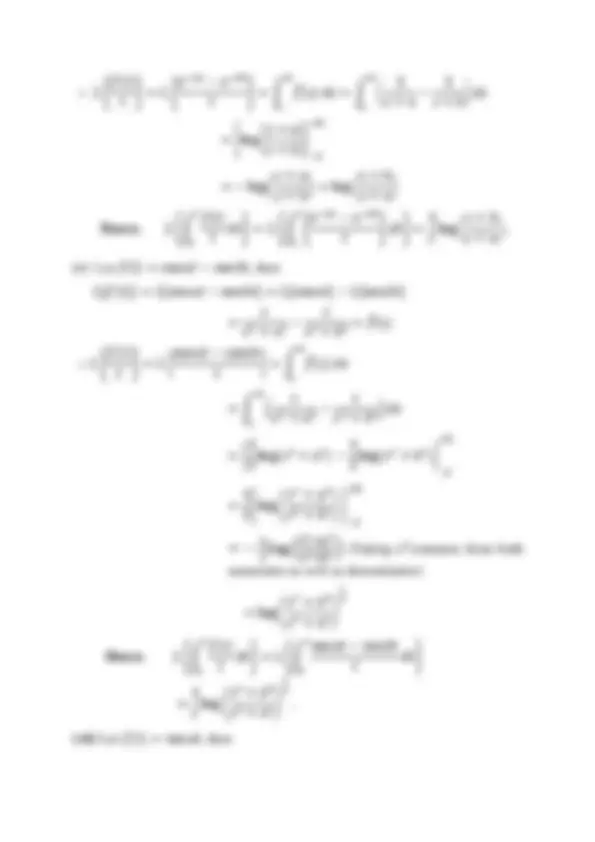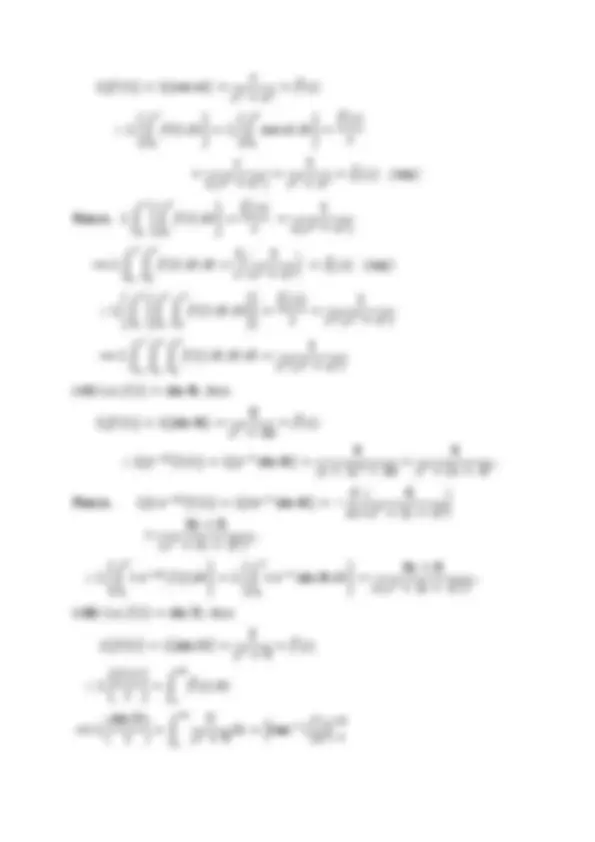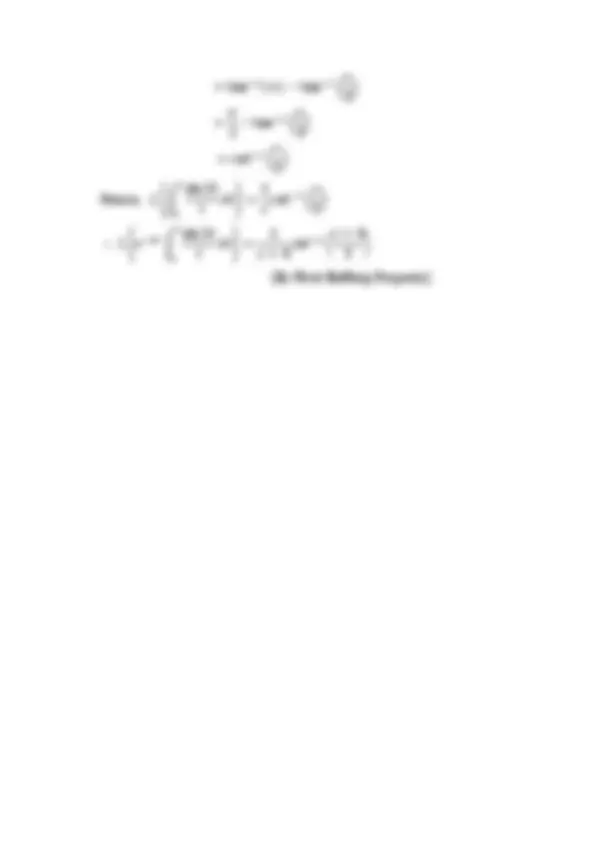





Study with the several resources on Docsity

Earn points by helping other students or get them with a premium plan


Prepare for your exams
Study with the several resources on Docsity

Earn points to download
Earn points by helping other students or get them with a premium plan
Community
Ask the community for help and clear up your study doubts
Discover the best universities in your country according to Docsity users
Free resources
Download our free guides on studying techniques, anxiety management strategies, and thesis advice from Docsity tutors
The Laplace Transform of Integrals, including a statement and a proof. It also provides several examples of Laplace transforms of integrals. relevant for students studying advanced mathematics, particularly Laplace transforms. It is useful for those who want to understand the Laplace transform of integrals and how to apply it to solve problems.
Typology: Summaries
1 / 5

This page cannot be seen from the preview
Don't miss anything!




1.5.6: Laplace Transform of Integrals:
Statement: If 𝐿{𝑓(𝑡)} = 𝑓
(𝑠), then 𝐿 { ∫
𝑡
0
𝑓
̅
(𝑠)
𝑠
Proof:
𝑡
0
−𝑠𝑡
𝑡
0
∞
0
By using integration by parts
𝑡
0
−𝑠𝑡
𝑡
0
𝑒
−𝑠𝑡
−𝑠
∞
0
𝑒
−𝑠𝑡
−𝑠
𝑡
0
𝑡
0
−𝑠𝑡
Example 1.7: Find the Laplace transforms of
(i) ∫
−𝒕
𝒕
𝟎
𝐜𝐨𝐬 𝒕 𝒅𝒕 (ii) ∫
𝐬𝐢𝐧 𝒕
𝒕
𝒕
𝟎
𝒅𝒕 (iii) ∫
𝒕
𝒕
𝟎
𝐬𝐢𝐧 𝒕
𝒕
(iv) ∫
𝒆
−𝒂𝒕
−𝒆
−𝒃𝒕
𝒕
𝒕
𝟎
𝒅𝒕 (v) ∫
𝐜𝐨𝐬 𝒂𝒕−𝐜𝐨𝐬 𝒃𝒕
𝒕
𝒕
𝟎
𝒅𝒕 (vi) ∫ ∫ ∫
𝒕
𝟎
𝒕
𝟎
𝒕
𝟎
(vii) ∫
𝒕
𝟎
−𝒕
𝐬𝐢𝐧 𝟒𝒕 𝒅𝒕 (viii) 𝒆
−𝟒𝒕
𝐬𝐢𝐧 𝟑𝒕
𝒕
𝒕
𝟎
Solution: (i) Let 𝑓(𝑡) = cos 𝑡, then
cos 𝑡
2
−𝑎𝑡
−𝑡
cos 𝑡
2
[By First Shifting Property]
2
Hence, 𝐿 {∫ 𝑒
−𝑎𝑡
𝑡
0
−𝑡
𝑡
0
cos 𝑡 𝑑𝑡}
2
(ii) Let 𝑓
= sin 𝑡, then
sin 𝑡
2
sin 𝑡
∞
𝑠
2
∞
𝑠
= [tan
− 1
= tan
− 1
(∞) − tan
− 1
− tan
− 1
= cot
− 1
Hence, 𝐿 {∫
𝑡
0
sin 𝑡
𝑡
0
cot
− 1
(iii) Let 𝑓(𝑡) =
sin 𝑡
𝑡
, then
sin 𝑡
− 1
(𝑠) [See example 1. 7 (ii)]
−𝑎𝑡
𝑡
sin 𝑡
= cot
− 1
(𝑠 − 1 ) [By First Shifting Property]
Hence, {∫ 𝑒
−𝑎𝑡
𝑡
0
𝑡
𝑡
0
sin 𝑡
cot
− 1
(iv) Let 𝑓(𝑡) = 𝑒
−𝑎𝑡
−𝑏𝑡
, then
−𝑎𝑡
−𝑏𝑡
𝐿{𝑓(𝑡)} = 𝐿{cos 𝑎𝑡} =
2
2
𝑡
0
𝑑𝑡} = 𝐿 {∫ cos 𝑎𝑡
𝑡
0
2
2
2
2
1
(𝑠) (say)
Hence, 𝐿 ∫ {∫ 𝑓
𝑡
0
𝑡
0
1
2
2
𝑡
0
𝑡
0
2
2
2
(𝑠) (say)
𝑡
0
𝑡
0
𝑡
0
2
2
2
2
𝑡
0
𝑡
0
𝑡
0
2
2
2
(vii) Let 𝑓(𝑡) = sin 4 𝑡, then
𝐿{𝑓(𝑡)} = 𝐿{sin 4 𝑡} =
2
−𝑎𝑡
−𝑡
sin 4 𝑡} =
2
2
Hence, 𝐿{𝑡 𝑒
−𝑎𝑡
−𝑡
sin 4 𝑡} = −
2
2
2
−𝑎𝑡
𝑡
0
−𝑡
𝑡
0
sin 4 𝑡 𝑑𝑡} =
2
2
(viii) Let 𝑓(𝑡) = sin 3 𝑡, then
sin 3 𝑡
2
∞
𝑠
sin 3 𝑡
2
∞
𝑠
= {tan
− 1
= tan
− 1
(∞) − tan
− 1
− tan
− 1
= cot
− 1
Hence, 𝐿 {∫
sin 3 𝑡
𝑡
0
cot
− 1
− 4 𝑡
sin 3 𝑡
𝑡
0
cot
− 1
[By First Shifting Property]